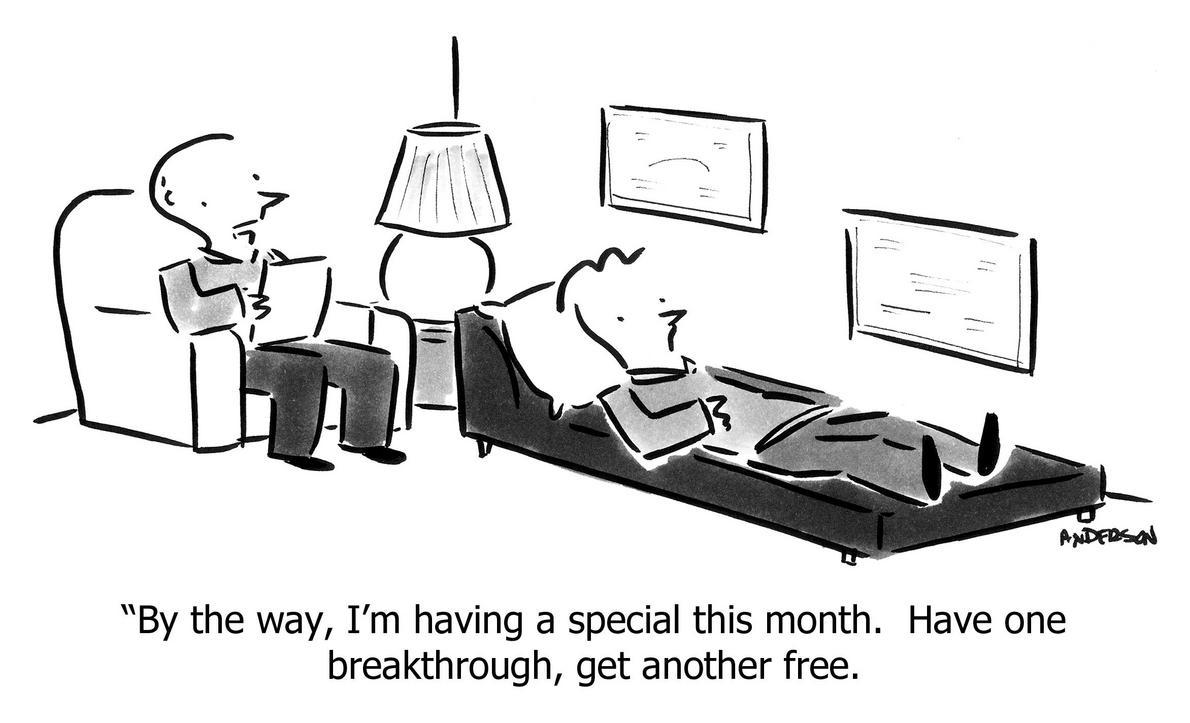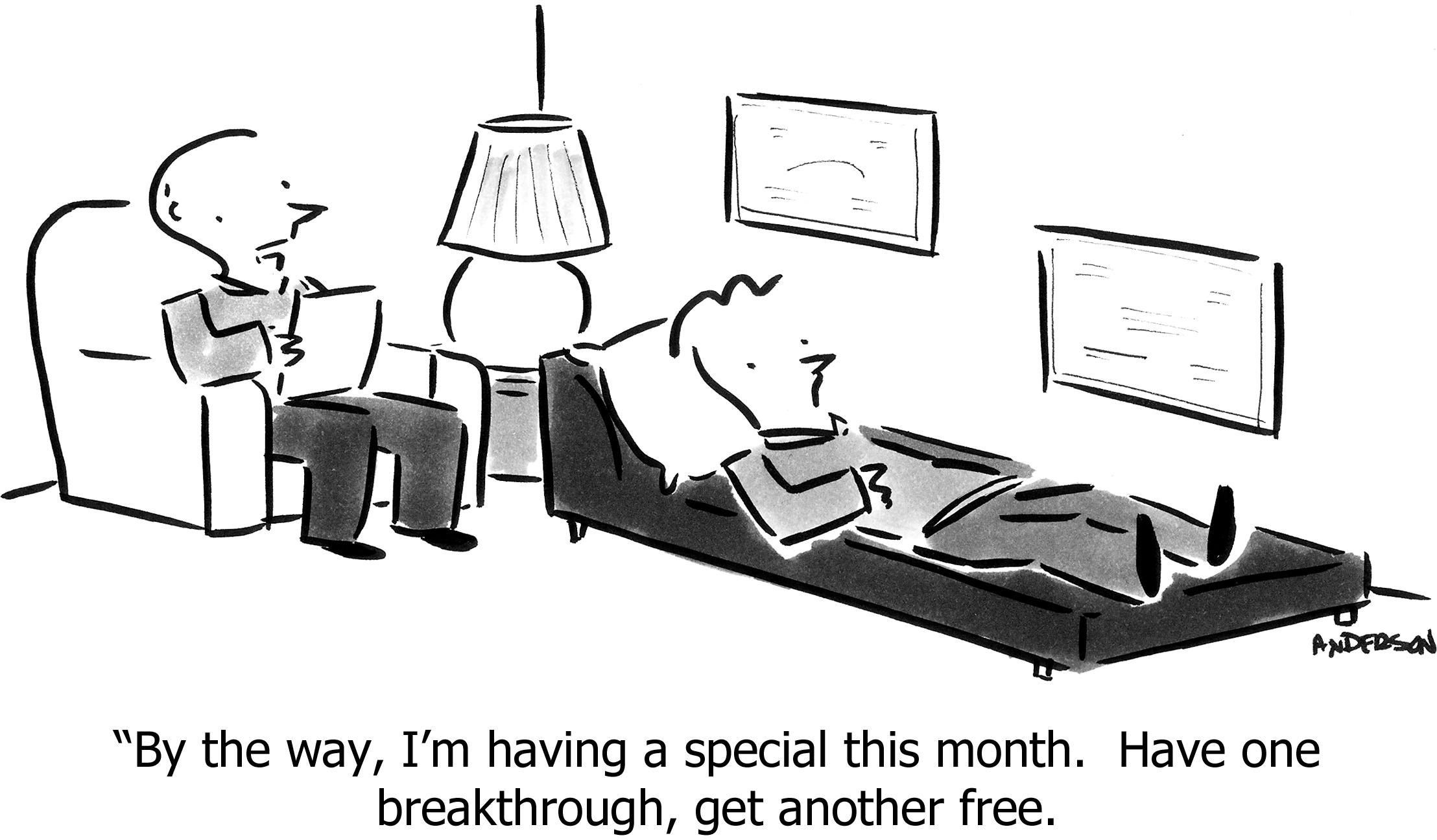Reframing “Freemium” by charging the marketing department
Seems like every third startup nowadays is using the “Freemium” business model: The lowest service tier is free-forever (so it’s easy to get started), with trip-wires thoughtfully arranged in all directions, causing “real users” who are getting “real value” to start paying.
It can work wonderfully of course, but usually it crushes companies, not only because of direct costs, but because the founders didn’t realize the business model itself caused them to make incorrect strategic decisions.
Foibles of Freemium
Let’s dispose of some misconceptions about what Freemium actually does for you and how much it costs.
Freemium is not customer development
Just imagine how much you’ll learn once you have 1,000 real, active users of the system: Everything from behavioral statistics (which features are actually used) to democratic product development (voting on which features customers would like to see next).
Trouble is, those freemium users are not like those who will actually give you money. Frequently the features that paying customers want don’t show up on the free-riders’ radar.
Think about it: Almost no freeloader will convert, ever. Even to the lowest tier. If you suddenly started charging merely $1/mo for your service, most would just quit. Why is that? Because the need, the interest-level, the value to that person isn’t pressing enough for even a pittance. But those who will pay $10/mo or $100/mo do have needs, and it’s not just a matter of scale, it’s a difference in kind.
Counterintuitively, the freemium-tier customers are not your target customer, not your “ICP”. There are ICPs among those freemium users; your strategy is to use price as a sieve for those ICPs to rise up, giving them as much time as needed for them to realize it. 95% will never rise up.
Your problem is that freemium users outnumber your paying customers 20:1 or even 100:1, so in feedback forums they drown out the voices of those who actually matter.
Freemium conversion rates makes marketing expensive
A really good conversion rate for free-to-paid is 4%, like Dropbox. Awesome for them, but it took a ton of work to get there, with one of the most successful Freemium products of all time. Normal rates are more like 1%, especially when you remember that most freemium users not only won’t convert, but won’t even stay active.
I surveyed1 a dozen small startups who don’t use freemium, and on average they see a 1% conversion rate from web traffic to purchase. The conversion rate to a free tier is higher than the conversion rate directly to a paid-tier (it’d better be, right?), but sadly it’s not typically that much higher: 3%-5% is normal, 10% at the extreme. But you only get paid on the few percent of those freemium users who convert, which again might be 2%-5% (with outliers like Slack and Spotify which are around 30%), which means your total conversion rate of web visitors to actual money can be many times worse than other startups.2
1 Andy Brice has much more data that supports my informal observation.
2 In OpenView’s Product Benchmark data of 458 respondents, the visitor → freemium conversion rate was 6%, and freemium → paid rate of 5%, for a total visitor → paid rate of 0.3%. Or FirstPageSage’s 2025 report, which showed a larger visitor → freemium rate of 13%, but a smaller freemium → paid rate of 2.6%, for a total visitor → paid rate of again 0.3%.
Which means it costs many times as much as it usually does for marketing campaigns to achieve the equivalent revenue. Annual pre-pay might solve it, but maybe not—it’s a huge hill to climb.
This essentially takes paid-advertising and almost all other forms of marketing off the table for driving growth in a freemium business, unless you’re willing to take big losses to get things rolling.
It also means you essentially have to build a viral product, because you can’t afford advertising. Getting true viral behavior is very hard—again most companies who attempt this will fail—and even so you need to seed it at the beginning, so you still have the marketing expense problem.
The few companies who were clear winners with this business model also raised tens or hundreds millions in funding, in part to get over this hump.
Freemium tech support is expensive
It’s easy to say “We’ll just direct everyone to forums,” but when people email tech support they want a response. And are you sure other customers want to spend their time being your support team? Is that something you ought to expect of your customers?
It’s easy to say “We won’t provide tech support for the free tier—they’ll understand since it’s free,” but if you really do ignore them they’ll be less successful with your tool, which means far less chance of them converting, and less chance they’ll evangelize to friends and coworkers. “Spreading the word” is one of the main benefits of Freemium, so losing this might be fatal.
It’s easy to say “We’ll provide a lesser grade of support for the free tier,” but then each rep is making a determination on “how much to help.” How will that conversation with the customer actually go? Even setting aside how that will make the customer feel, how will that make the support reps feel, day in and day out, that they’re intentionally providing less help to people who need help?
Are you prepared for people who say, “If you help me through this, then I’ll pay.” Are you hard enough to shut the door in their face, even knowing that in fact they probably still won’t pay?
If you care about good support—one of the few true competitive advantages a small startup has—can you really segment who gets treated well and who gets the cold shoulder? Should you really turn your back on the benefits created by great tech support? Is that conducive to converting free accounts to paid accounts? Is it helping your company’s reputation?
Advantages of Freemium
Obviously freemium also has important benefits which cannot be denied:
- Easy to start. Even a “30-day free trial” or “money-back guarantee” is a much bigger barrier than “free.” Getting a web visitor to stop perusing and start using the product is a critical step in any customer acquisition, and you’ve just diminished the barrier as much as possible.
- Easy to upsell. They’re already using your tool, so whether it’s by special offer, changing the pay scale, or the user simply outgrows the confines of their service tier, there’s many ways a person can start giving you money.
- Stats for selling. It’s awesome marketing to be able to say “Join 10,000 happy users.” It’s social proof, just like the subscription counter in the corner of a newsletter implicitly saying “if 60,000 people think it’s worth their time to read this every week, maybe it’s worth yours too.” It’s also useful when bagging bigger customers because it proves your system can scale, both in technology and in training new users with minimum effort.
- Not using the competition. One more user for you is one fewer user for them. Market share is its own value, especially in zero-sum games.
So in the face of the positives and negatives, how do you decide whether it’s right for you and, if it is, how do you think about it so that you’re reaping the benefits while mitigating the costs?
Charge Freemium to the marketing department
A pattern emerges from those “advantages” bullets: They are marketing, as opposed to utility. They are lead-gen, reducing barriers to conversion, and competitive advantage.
Retool your expectations of Freemium: It’s a marketing cost. It’s more expensive than you give it credit for, but it could very well be the best marketing strategy.
So how do you decide whether those costs are worth the benefits? My technique is to “charge the marketing department” exactly like AdWords or any other lead-gen campaign: measuring the total cost of acquiring new paying customers.
The reasoning is: You have a theory that by spending the money to support these freeloaders, you’re in fact building an efficient path to real, paying customers. That goal—revenue—could be attained other ways: AdWords, SEO, social media, or any other marketing technique. So just like any marketing campaign, the marketing department should pay, measure the results, and compare the ROI against other methods.
(And make sure the cost is much less than total lifetime revenue—the equation that many startups fail to achieve, exactly because they don’t honestly consider the total cost to acquire.)
How much should you charge the marketing department? Suppose you really were charging those free-loading customers, but only enough to recoup costs, not to be profitable. Amortize those costs—infrastructure and tech support—and come up with an effective “price” for the free tier.
That’s what those users should be paying (excluding profit), so that’s the amount the marketing department needs to “reimburse” the rest of the company.
That said, we agreed there were additional benefits of having free-loading users, such as the value of a competitor not having that customer, or the word-of-mouth growth benefit of larger market-share. You can decide what those things are worth, and deduct that from the marketing expense. That is, you could answer the question: “What would you be wiling to pay, per customer, per month, only to prevent them from being a customer of a competitor?” The answer is probably more than $0 (unless you really have no money, in which case Freemium is probably not the right model for you!), but not infinite either.
You have no excuse to not be measuring this net cost-per-user so that you’re running this Freemium program with full knowledge of the costs, and comparing it to other forms of marketing.
Further Reading
More great articles on the subject:
- Andy Singleton on how to “make those cheapskates pay.”
- Andrew Chen on the precise financial model of freemium (spreadsheet included).
- Eric Ries on three strategies for “free” that still lead to making money.
https://longform.asmartbear.com/freemium/
© 2007-2025 Jason Cohen
 @asmartbear
@asmartbear ePub (Kindle)
ePub (Kindle)
 Printable PDF
Printable PDF







